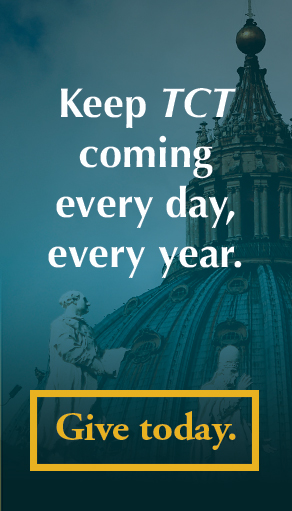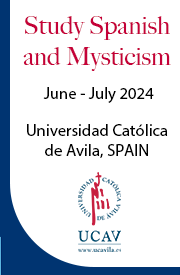I was looking at an article on painting recently and, as usually happens in modern art discussions, came across something quite odd. The author proclaimed with evident glee that it is now an almost universal opinion among art critics that Caravaggio is a greater painter than Michelangelo. Now, Michelangelo means: Sistine Chapel, Pietà, David, Moses. This turn from Michelangelo might look to a suspicious nature like a turn from Christianity.
And in a way it was, though in ways worth examining. The writer mentioned how Caravaggio’s mistresses and homosexual partners entered into his work, which is often secular and supposedly, therefore, “closer to our lives.” By contrast, Michelangelo’s massive figures – God, Adam, Eve, the patriarchs, prophets, saints, the Blessed Virgin – are just too large and distant to speak to us today.
If true, this would be of infinitely greater importance than which painter is the greater. At a certain level, questions about greatness are silly. Was Bach, Mozart, or Beethoven the greatest composer? It’s like asking whether a rose, lily, or tulip is most beautiful. They’re differently glorious. That’s all.
While Michelangelo was creating the Sistine Chapel ceiling, another great artist, Raphael, was painting his famous fresco “School of Athens” next door in the papal apartments. Raphael took a peek at his rival’s work. He was so impressed that he went back, chipped out a face, and replaced it with Michelangelo’s – thereby placing him among the greatest Greek geniuses.
Contrary to art PR, artists – in the Renaissance, as today – do not usually sit around praising one another and singing “we are the world” while promoting peace and understanding. They are fiercely jealous. Raphael’s was no small tribute.
But does it mean anything now? I happened to be passing through Rome and London this week on other business, where there are shows about Caravaggio and Michelangelo, which the art critic mentioned above was reviewing. No one looking at them fairly, as I tried to, will feel the earth has been knocked off its axis. Michelangelo is in a slight slump among aesthetes, perhaps because earlier claims of his own homosexuality have not withstood scholarly scrutiny. (In the mainstream art world, heterosexuality and Christianity seem to be regarded as temporary aberrations from which the race is finally recovering.)
Yet I think our art critic stumbled inadvertently on to something. Michelangelo famously denied that he was a painter (he believed he was a sculptor) and only agreed to paint the Sistine frescoes under pressure from Pope Julius II. The work is magnificent, but let’s concede, yes, in part, frankly beyond us at times.
I have friends who are quite accomplished professionally, but left the Faith in college. The wife of one of them told me recently that her husband would like to come back but he feels it’s “quite beyond him.” We know this is not strictly true, but his situation may be more common than we think.
Caravaggio’s religious paintings – Paul’s conversion on the way to Damascus, the death of the Virgin, and many others – do have a humane quality that makes them approachable. Caravaggio doesn’t paint in the heroic mode of Michelangelo, and does not need to because he is brilliantly depicting another side of the faith, what we might call the ordinary human seeds that sprout and sometimes grow into the gigantic figures in our tradition.
But we should not allow the human and the everyday to be set against the heroic and the historic in the manner of our art critic, especially in religious matters. These qualities are all part of one great thing in different modes. Vatican II renewed the universal call to holiness, a good modern “development,” in Cardinal Newman’s sense. We have recovered the idea that everyone, even the large majority of us who will never live more than the simplest lives, participates in the great adventure that leads to God. And that’s a good thing for our age.
But it is also good for us to have Michelangelo’s David, the youngest son of Jesse, so inconsequential that the family didn’t even bring him out when Samuel was seeking Israel’s next king; his Moses – a mid-level Egyptian leader, who eventually found his way into the Exodus – and a name that shall never be forgotten; and his Pietà, beautifully showing a dead Jesus in Mary’s arms, two Jewish provincials who changed the world. Representing all of them as huge figures is the merest realism.
We all move between two poles: the humble facts of our births and the transcendent destinies to which we are called. In the Divine Comedy, when they are about to set out on the way to the beatific vision, Dante says to Virgil: I’m not St. Paul or Aeneas (both made trips to the other world). Why me? No one would think me worthy.
Virgil’s classic answer: Yes, but this has been willed – as it has been willed for all of us – in that place where what is willed has the power to happen.
We’ve had a great development of doctrine in the past fifty years, a recognition of the potential greatness of everyday lives. But everyday lives in the past were still always measured, within their own limits, by the great figures of secular and sacred history. It can happen again and needs to, without our having to leave our humble posts. John Paul II preached it repeatedly – don’t settle for mediocrity.
Our worst trouble comes from that fact that in finding the divine value in the everyday, we now risk being content with the everyday all by itself and never discovering the very greatest things possible in every human life.
Michelangelo’s work teaches that older, permanent lesson, and so does Caravaggio, in his own way, at his best. Both will still be around when the art world turns from them both to some other fad.















